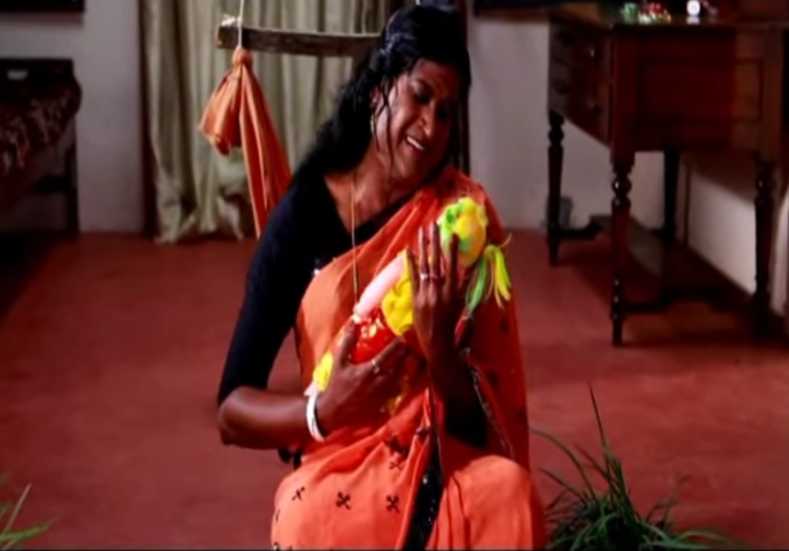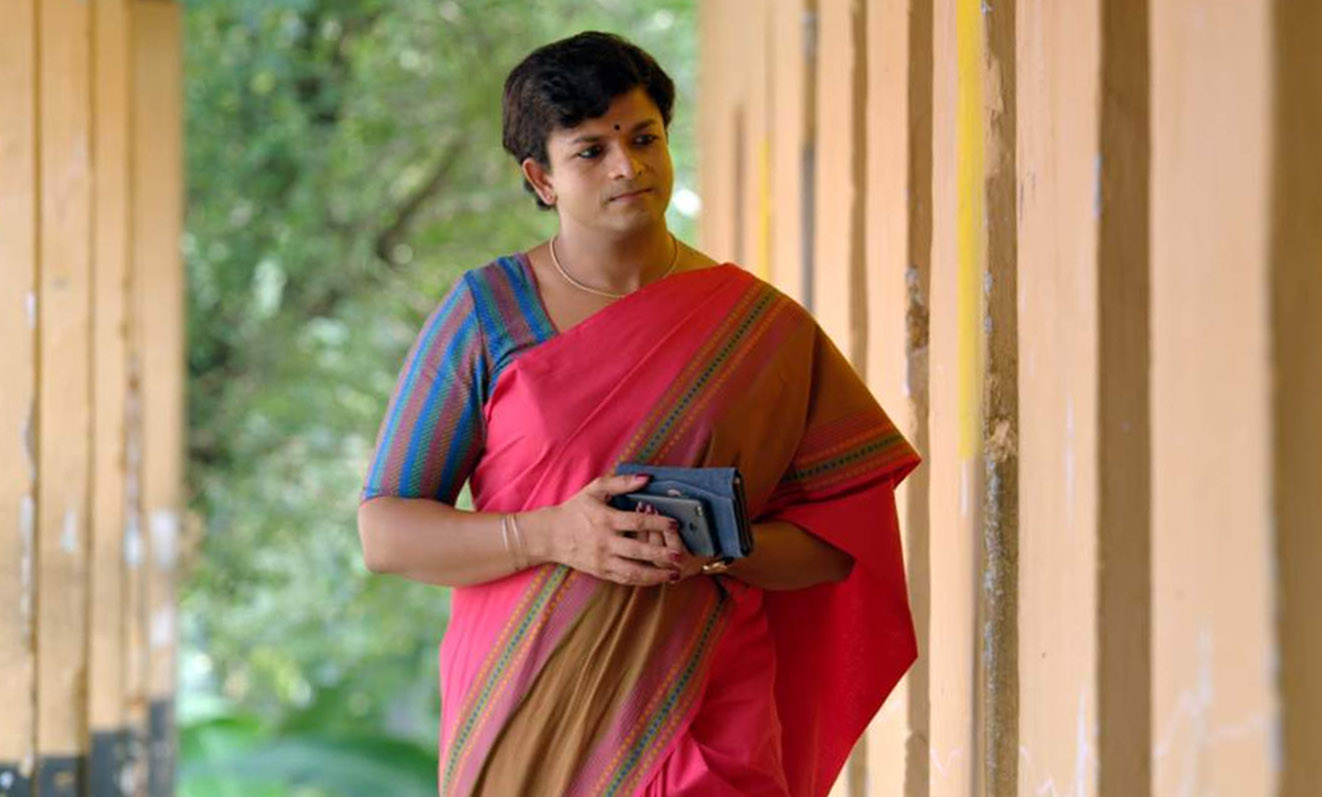Anu Kuriakose critically looks at the traditional concepts of ‘marriage’ and ‘family,’ the recent marriages of transgender people in the public sphere of Kerala, and its representational politics in selected Malayalam films. She argues that though the public visibility of marriages between transgender people is a historically significant phenomenon, it continues to reify cisheteronormative notions of socially accepted heterosexual conjugality and patriarchal familial codes.
Anu Kuriakose
Malayalam cinema always had a fascination for patriarchal cisheteronormative1 marriage and family and couples gratifying their sexual desires within the framework of this rigid social institution. Scholarly inquiries into social hierarchies in Kerala have observed that patriarchal monogamous marriage and heterosexuality have been precarious in the state since their institutionalization through social and legal reform in the twentieth century. This process was consolidated in the 1950s (Muraleedharan 2014), and sustained by the 1960s generation’s attempts ‘to cut off from the community or joint family contexts’ (Venkiteswaran 2010, 43). A significant feature in the later decades is the emergence of nuclear families that could be read in line with the coming of modern sensibilities in the state. Various feminist movements in the 1970s broke the silence on articulating sexualities in the public sphere of Kerala and, as a result, Malayalam films also started capturing the possibilities of erotic tensions in homosocial spaces—spaces of intimate sociality between those of the same gender. In light of these longer histories of socially accepted heterosexual marriage and familial codes in Kerala, this article tries to locate transgender people’s recent efforts to assimilate to society through marriage and familial formations, and also examines the representation of transgender people’s familial relations in some recent Malayalam films.
In early Malayalam films, normative families are grounded on heterosexual conjugality, mainly for the upbringing of the next generation. Certain films have deviated from this path by depicting homosocial intimacies in lodges, rented houses, and ladies hostels. But they have carefully concealed the possibility of same-sex desires among the characters and presented erotic bondings as exclusively heterosexual to appeal to the cisheteronormative masses. Muraleedharan Tharayil puts it rightly in his analysis of cinematic depictions of homosexual tensions and spectacles of pleasure in heteronormative narratives: ‘the narrative traditions established by our mainstream cinema as well as the patterns of reception they engender have fabricated a discursive logic that remains entrapped within the paradigms of heteropatriarchy’ (172). Accordingly, the queer underpinnings in films in the 70s and 80s—for instance, Randu Penkuttikal (1978) and Desatanakkili Karayarilla (1986)—were shadowed by heterosexuality. Protagonists either conform to this or choose self-destruction. Whether the films are queer-themed or not is itself a widely debated topic on online film discussion groups even today. An array of buddy films since the 80s have featured popular actors—Mammootty, Mohanlal, Jayaram, Mukesh—paired with actors who were subversive masculine symbols—Sreenivasan or Jagadeesh among many others—and these films have been packed with homoeroticism, but that is obscured by the union of the macho hero with the heroine. At a closer look, one could see these films as offering ‘alternative domestic spaces’ and the homosocial space borders on the ‘replication of patriarchal heterosexual domesticity’ (Tharayil 78-79). Even certain later films that are explicitly acknowledged as queer—Sancharram (2004), My Life Partner (2014)—depict same-sex desire as a crisis and hold on to the patriarchal hegemony of heterosexual marriages and heteropatriarchal familial spaces. This tendency in these films is emblematic of the deep-rooted sentiments and social sanctions for a cisheteronormative familial space in Kerala.

Those with non-normative gender and sexual identities, and their efforts to find love and build families, have a long history of being misrecognised or erased in popular narratives. Navaneetha Mokkil’s (2010) discussion on the lesbian subject in Kerala in the 1990s and 2000s recalls Sheela and Sree Nandu who decided to live together in 2003, and how their decision became infamous in Kerala. By citing the controversy initiated by media and the discussion in the public sphere, Mokkil observes that Nandu’s assertion of transgender identity ‘showed up the slippages in the public naming of this relationship as lesbian’ (193). Thus, one could observe the problematic comprehension of gender identity and sexuality in various discourses including films as well. As family is perceived as the nodal point of the constitution of society, many trans people become familial outcasts due to their gender identity. Unlike Kerala, certain other Indian states have established transgender subcultures like the hijra clan who have their own internal frameworks of domesticity and familial formations (Reddy 2005). In Kerala, some trans communities adhere to these traditional alternative families and many others wish to legally wed and thereby form a family. Transgender couple Surya and Ishaan tied the knot in 2018, which was widely reported as the first trans man and trans woman to marry in a public ceremony. A number of marriages of transgender persons followed, including marriage between a trans person and a cis person (Miga-Shamsi, Vihaan-Rajasree, for instance). Though weddings may be conducted upon personal preferences, it is interesting to note the cisheteronormative representation even of these trans weddings, as evident in the sensationalized wedding photographs circulated in the media. The cisheteronormative bride-groom binary is highly asserted in the social ceremony of the wedding.

I shall now briefly point out the selected contemporary Malayalam films that touch upon the issue of transgender people’s marriages and the construction of familial spaces in it. Meena T. Pillai (2013) observes that ‘the regional cinemas have been instrumental in the crystallisation of social formations with clearly demarcated structures and meticulously codified social relations’ (102). Most films featuring transgender protagonists follow a heteronormative framing and plot: the protagonist is always a trans woman, and if she falls in love, it is with cis men. Ardhanaari is a 2012 feature film that captured the lives of the hijra community in Malayalam cinema for the first time. The central character Vinayan expresses their sexual desires to a cis man as well as a trans woman (the hijra Kokila) and is adjudged as a bisexual person. After being initiated into the hijra community, Vinayan, now as Manjula, marries Balu, their lover since childhood. The wedding ceremony and the construction of domesticity mirror cisheteronormativity and the film depicts the familial space being shattered when Balu’s cis feminine ‘legal’ wife accuses Manjula of claiming her ‘children’s father’ (ente kuttikalude achan in Malayalam). This trope of a relationship breaking apart owing to infertility or inability to procreate is arguably a fundamentally cisheteronormative one. This could be argued as an important factor in all cisheteronormative marriages, as infertility or the inability to procreate is popularly synonymous with a failed marriage. The forced heterosexual marriages of trans characters with cis persons in Odum Raja Adum Rani (2014) and Udalaazham (2019) ultimately fail as the trans characters, facing gender dysphoria, cannot respond to the romantic needs of their heterosexual partners. Ardhanaari and Udalaazham emphasise the trans feminine character’s incapacity to procreate as the fragmentation of traditional ‘family’ rather than challenging the very limits of what family could mean.

Two films that released in 2018, Aalorukkam and Njan Marykutty, offer different takes on trans lives, marriage, and the institution of the family. While the trans woman Marykutty, the protagonist in Njan Marykutty, prefers to be unmarried rather than having extramarital sex, Priyanka in Aalorukkam has a cis male partner and an adopted daughter—a typical nuclear family. Though Marykutty’s characterisation has invited positive reviews from the public sphere and some trans activists, her preference to have sex only in nuptial bonding adheres to mainstream sentiments of sex outside marriage as a tabooed subject. The recurring reference to Marykutty’s maternal family and her return to that patriarchal family at the end of the narrative diminishes the possibilities of a futuristic, trans-inclusive marriage and family, which is against the film’s progressive stand. Though Aalorukkam never exhibits the ceremony of a transgender person’s marriage, there are verbal references to Priyanka’s wedding. The film has an elaborate discussion on Priyanka and her husband’s efforts to live like ‘socially accepted’ couples. They try to construct an alternative but nevertheless cisheteronormative household in an apartment. The film implicitly criticises the social denial of transgender people’s right to legally marry and live as couples: Priyanka and her husband could not legally adopt a child because she is a trans woman and their relationship is not legally recognised.

One could see certain progressive shifts in the public sphere of Kerala that recognise non-cisheteronormative intimacies and pleasures, and contemporary Malayalam films’ efforts to capture trans lives, with varied representational politics. Though Malayalam cinema takes some effort to mark the changing sensibilities of gender identities, sexualities, and social bondings, it is still submerged in patriarchal notions of binary gender and desires. While trans femininity in these films mirrors cis femininity, trans women are also represented as incapable of entering into marriage and motherhood, as prescribed by the cisheteronormative archetype, in these films. Let us hope that future films will be able to break free from social stereotypes of cisheteronormative weddings and cisheterosexual familial spaces by depicting the marriages of trans people, respecting their right to be in a relationship that has legal and social sanction.
References
- Mokkil Maruthur, Navaneetha. 2010. Sexual Figures of Kerala: Cultural Practices, Regionality and the Politics of Sexuality. PhD dissertation, University of Michigan. https://deepblue.lib.umich.edu/handle/2027.42/78876
- Muraleedharan, Tharayil. 2010. ‘Women’s Friendships in Malayalam Cinema’. Women in Malayalam Cinema: Naturalising Gender Hierarchies, edited by Meena T. Pillai, 154-177. Hyderabad: Orient Blackswan.
- Muraleedharan, Tharayil. 2014. Muraleedharan, Tharayil. ‘Shifting Paradigms: Gender and Sexuality Debates in Kerala’. Economic and Political Weekly 49 (17): 70-78.
- Pillai, Meena T. 2013. ‘Matriliny to Masculinity: Performing Modernity and Gender in Malayalam Cinema.” Handbook of Indian Cinemas, edited by K. Moti Gokulsing & Wimal Dissanayake. New Delhi: Routledge.
- Reddy, Gayatri. 2005. With Respect to Sex: Negotiating Hijra Identity in South India. Chicago University Press.
- Venkiteswaran, C.S. 2010. ‘Film, Female, and the New Wave in Kerala’. Women in Malayalam Cinema: Naturalising Gender Hierarchies, edited by Meena T. Pillai, 41-56. Hyderabad: Orient Blackswan.
Filmography
- Abhilash, V. C., dir. 2018. Aalorukkam. Jollywood Movies.
- Avala, Unnikrishnan, dir. 2019. Udalaazham. Doctors’ Dilemma.
- Padmakumar, M.B. 2014. dir. My Life Partner. Kirthana Movies
- Padmarajan, dir. 1986. Desatanakkili Karayarilla. Burton Movies.
- Pullappally, Ligy J. dir. 2004. Sancharram.
- Sankar, Ranjith, dir. 2018. Njan Marykutty. Dreams N Beyond.
- Souparnika, Santhosh, dir. 2012. Ardhanaari. MG Sound & Frames Company.
- Varma, Viju, dir. 2018. Odum Raja Aadum Rani.
About the Author: Anu Kuriakose currently teaches at the Dept. of English, Govt. Arts and Science College Kinanoor, Karinthalam, Kasaragod District, Kerala. She received her doctoral degree from Indian Institute of Space Science and Technology Thiruvananthapuram, Kerala. She works on transgender identities in the public sphere of Kerala, and trans representations in myriad visual and cultural productions, including cinema.
